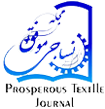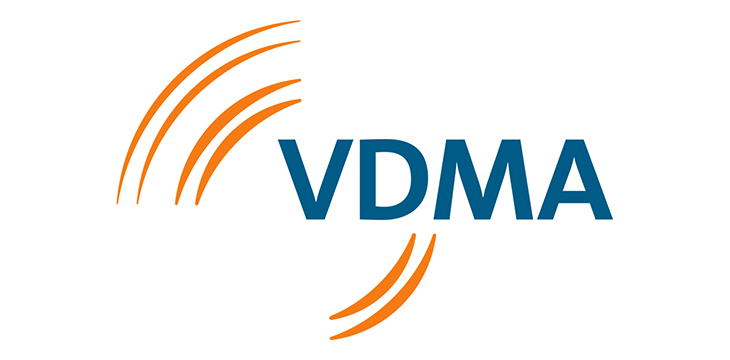José Canga Rodriguez, DIENES “Our MultiMode® engineering approach supports our customers in the development of innovative textile and technical filament yarns for a more sustainable future.”
The global demand of textile fibres has been almost doubled from approx. 60 to 110 million tonnes per year from 2000 to 2020 while the number of produced garments increased three times from approx. 50 billion to 150 billion. In the same period, world’s population has increased by approx. 30% to reach almost 7.8 billion people. In 2015 only 1% of textile products were recycled as the result of big challenges that the textile industry is facing in order reach circularity. The factors are manifold: undesired substances which are embedded in the yarns and cannot be recycled, the fact that many garments are made of mixed materials which are hard to separate, recycling costs being higher than the value of virgin materials, etc. As consumers are nowadays searching for more sustainable solutions that address key environmental issues related to the garments they wear, there is a growing trend towards sustainability in the textile industry at global level. This new situation is building up pressure on textile brands by holding them accountable for their environmental impact in a way that consumers expect meaningful social and environmental goals (e.g., ambitious CSR[1] and ESG[2] KPI’s[3]) and a trustworthy implementation of a sustainable product stewardship. This paradigm shift involves both the implementation of recycling approaches and a broad use of biobased materials as an alternative to polymers like polyester and nylon. Therefore, a value-added hierarchical usage of biomass is a keystone in building a more environmentally friendly textile production. In the cascade utilisation of resources proposed by the European Directive 2008/98/EC[i], cellulose-based fibres would be one of the many different products to be processed out of wood in future bioproducts mills. In order to make out of biobased fibres a real competitor to established polymers like polyester or nylon, both securing feedstocks and a further development of spinning technologies will be essential. DIENES supports its customers in their work developing cutting-edge fibre products from the first laboratory tests to the modular construction of their production lines. Innovative products like precursor yarns for carbon fibres made from renewable raw materials are produced and improved with DIENES spinning systems. Biobased fibre products pose a big technological challenge as growing demands on the varying quality of recycled feedstock and the achievement of a consistent fibre performance require a continuous development and optimisation of both technology and production parameters. Research work in the field of biobased fibres is characterised by a high degree of adaptation needs. Research facilities must be able to be adapted after initial experiments and the knowledge gained thereby. The necessary adjustments are made under the conditions of a highly complex manufacturing process, which is determined by many influencing parameters. This results in the following requirements for the flexibility of the electronics control of the research facilities:
• INTEGRATION: Easy integration of new production modules
• SCALABILITY: Easy replacement of production modules with modified specifications
• FLEXIBILITY: Easy modification of production steps’ positioning within the production line
• HIGH PERFORMACE: Intelligent production modules synchronized by a master process control level
• ANALYTICS: Continuous monitoring and evaluation of process parameters A reliable development of textile and technical filament yarns demands an efficient, systematic and, in part, selfoptimising experimental working system, which must be intelligent in gathering data from the process and flexible in enabling the rearrangement of the process.
DIENES’s approach to meet such demands is called MultiMode®. In a MultiMode® plant, each process step is represented by a module which can be individually adapted to customerspecific requirements and has its own decentralised control. Thus, DIENES production lines consist of several intelligent modular units which can be easily exchanged and rearranged at any time with a reduced programming effort. Moreover, all production parameters can be permanently visualised and recorded, enabling a complete traceability of the process. DIENES offers a complete portfolio of solutions for the development of a product from the idea to the practical implementation based on a modular conceptual approach which ensures the required flexibility for the complete validation process from the first lab trials up to an industrial scale production line: principle -> process -> product -> production.
In a MultiMode® line every single module represents a production step and can store knowledge at module level and act according to the function of the module in interaction with other modules. The Multimode® system runs on three levels: Slave (Level 1 – MMS: MultiMode® Slave), Master (Level 2 – MMM: MultiMode® Master) and Upper control (Level 3 – MME: MultiMode® Explorer) The requirements for a flexible control system have reached a very high technical level alongside all the expectations from the user regarding ergonomic demands for the interaction with HMI (Human Machine Interface) and the equipment:
• Easy extension or reorganisation of the modules in the system.
• Various process ideas can be tried out in one day by modifying the modules.
• Enables the operation of individual modules outside the plant.
The configuration of the system follows a hierarchical structure. The foundation is formed by the yarn treatment modules. Each of these modules is equipped with a MultiMode® box, hence it is equipped with its own the intelligence based on a PLC to control itself and to organize the module in association with other modules in the plant. The control hierarchy has an intelligent modular structure that configures itself according to the arrangement of modules given by the hardware and the interfaces within the system. Thus, a structure is realized that allows new arrangements by configuration and without any programming work required.
Control hierarchy has an intelligent modular structure that configures itself according to the arrangement of modules given by the hardware and the interfaces within the system. Thus, a structure is realised that allows new arrangements by configuration and without any programming work required. From a control perspective, the process level with the MultiMode® boxes forms the control level “BASIC” with the MMS modules. Up to 14 of these basic modules can be switched to one MMM. This second control level “INTEGRATED” is organised by the MMM, which is also responsible for configuring and forwarding the information to the computer-based MME. The computer level control (MME) can be connected with 4 MMMs, that gives the possibility of 56 MMS modules connected to their corresponding MMM with their own local input displays or to an industrial PC via gateways allowing all visualisation and control options by means of a touch screen. The upper control level is the process control level “ADVANCED” and organises the elegance functions of the system. The functions included at the MME include features like:
• Real-time evaluation of all sensors, which can be combined with each other in graph
• Data logging with a connection to an SQL database every second
• Data management. The system has the possibility to transfer recorded data to EXCEL for further analyse.
• Access control with user administration (password protected) with different access levels to the operation system
• Tracking of all operator inputs (operator login required)
• Recipe management for saving current settings as a recipe under a freely assignable name to be used a later moment if necessary
• Alarm logging
• Mini-monitoring. Single parameters can be monitored in a small screenin-screen application in real time. It is possible to add additional parameters to the “mini-monitor” and generate ad-hoc visualisations making it a quick and easy way for the user to analyse correlations between different production parameters.
• Long-term-monitoring of operation parameters.
• Printer function with no limitations allow printouts and screenshots of any view or diagram on the screen.
• Notepad function for making notes on the screen. When printing the full screen, these notepads are also printed
Dr. Ulrich Schwenken, Trützschler Group
“Trützschler’s intelligent and automated solutions contribute to more efficiency – for example through higher productivity,better raw material utilization and lower energy consumption.”
Further, we have the vision of intelligent fiber processing. Digital solutions are key to realize this: They complete our intelligent machinery and enable customers to generate profits faster, bundle resources and optimize processes with little effort. Last but not least, Trützschler stands for sustainability and circularity in the textile value chain. Therefore, we are pioneers in textile waste recycling. Our technologies empower our customers to achieve the maximum quality when processing secondary fibers from textile waste.
Werner Volkaert, Sedo Treepoint
“Digitalisation is the key to resource efficient and sustainable production in textile industry”
In today’s textile finishing industry, intelligent automation and digitalization play an essential role in resource efficiency and sustainability. By monitoring and managing the complete work-flow, areas of inefficiency can be identified and optimized. All these data are used to make data-driven decisions to select the optimal available process, best usage of machines, intelligent use of energy and efficient allocation of resources. By using digital technologies, manufacturers can optimize their production processes, reduce waste, and minimize their impact on the environment, while increasing profits and improving quality.

